With the ability to completely outcompete native vegetation and form dense monocultural infestations, Spanish heath has become one of the most prolific weeds in Tasmania.
Tasmanian Tree Care has undertaken several experiments with the aim to identify the most effective method to control Spanish Heath. This article will provide a brief introduction to the weed, as well as report on the methodology and findings of the experiments.
Spanish heath history and impacts
Spanish heath (Erica lusitanica) is originally from Europe and was most likely introduced to Australia as a garden plant due to its floral aesthetics. The cooler, European-style climate of Tasmania has led to the weed establishing itself throughout much of the state and Spanish heath is listed as a declared weed under the Tasmanian Weed Management Act 1999.
Agricultural and natural areas are affected by the impacts of Spanish heath and there has recently been an increased awareness of the threats that the weed poses. These threats include the following:
- Reduction in agricultural grazing – Spanish heath is especially prevalent on cleared land and outcompetes pasture species, reducing the amount of food for farm animals and reducing livestock movement.
- Displacement of native vegetation – Spanish heath can establish itself within natural areas and compete with established native vegetation. This reduces both food and potential habitat for native wildlife.
- Fire hazard – The high flammability of Spanish heath means it poses a significant fire risk to any nearby properties and infrastructure.
Spanish Heath Identification
Spanish heath is classed as a woody, perennial shrub and can grow to heights of over two metres. It is identifiable by its abundance of pinkish-white, tubular flowers which are present throughout winter and spring (see figure 1).
When not in flower, the weed is often mistaken for native heath species such as Common heath (Epacris impressa) and is often overlooked. The leaves are small, narrow and are generally 4-7mm long and thin, and differ from the sharper, thicker leaves found on native heaths.
Fruit is a small capsule roughly 3mm long and each fruit contains between 80 and 100 seeds which are barely visible to the naked eye.
Positive identification is crucial prior to implementing any control methods.
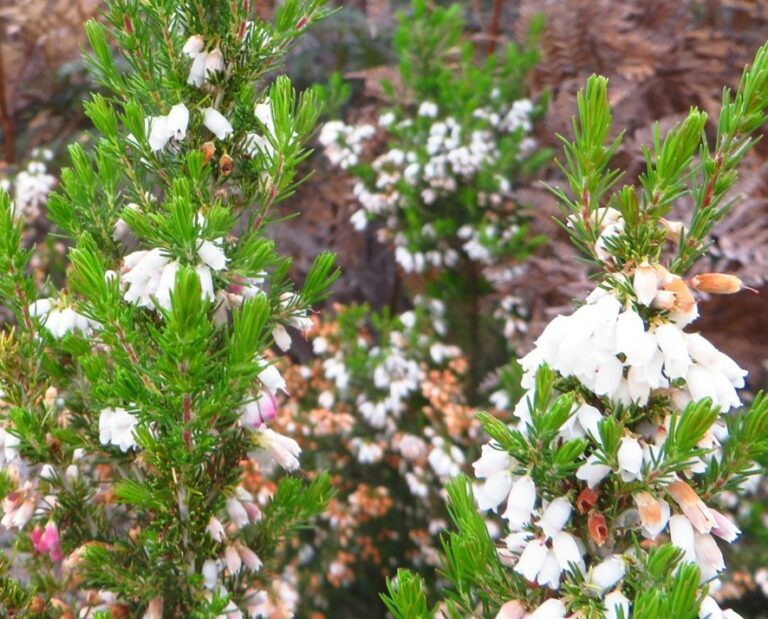
Spanish Heath Spread
One of the reasons Spanish heath has become so abundant is its ability to spread at a rapid rate. Seed dispersal is climate dependent but usually occurs from late October through to December, with germination taking place from Autumn through to Spring. Each Spanish heath plant can produce millions of tiny seeds which can be spread in a variety of ways including:
- Wind
- Soil disturbance
- Vehicle draught
- Water
- Slashing and brush cutting when in seed
- Gravity
Spanish Heath Control Measures
There are numerous control measures for Spanish heath and the sooner an infestation is controlled, the less follow-up work will be required. A comprehensive weed management plan which incorporates a range of methods is recommended for the best control results.
Control is not recommended when Spanish heath is seeding as this will only assist in seed dispersal and lead to an increase in further infestations.
Control methods include:
- Hand removal – small, young plants can easily be removed by hand. Care should be taken to pull out plants as close to the base as possible to avoid stems snapping off. This method is ideal for small infestations or follow up control of previously treated areas.
- Mechanical removal – for larger plants where hand removal is not an option, it is possible to use an excavator with a grabbing attachment to pull plants out from the base. This method is useful on large solitary plants but does require clear access for the excavator.
- Manual brush cutting or hand sawing – Using a hand saw, chain saw or a sturdy petrol-powered brush cutter with a circular saw blade is an effective way of cutting plants to stump level. This is useful for areas inaccessible to machinery as well as small in areas. Annual follow-up cutting will be required on any regrowth.
- Mechanical brush cutting or mulching – this is performed using a heavy-duty brush cutter attached to a skid steer machine (see figure 2). Ideal for dense infestations on agricultural land where Spanish heath has formed a monoculture. Annual follow-up cutting will be required on any regrowth.
- Cut-paste – this method can be used in conjunction with brush cutting or hand sawing and is ideal for reducing the risk of regrowth from stump level. A strong herbicide solution (recommended glyphosate 1:3 parts water) is applied directly to the remaining stump. Herbicide should be applied within thirty seconds of cutting for effective results.
- Foliar spraying – this entails spraying an herbicide solution directly to the leaves and flowers of the plant. Glyphosate at a rate of 1:100 parts water can be effective on younger plants, though a designated woody weed herbicide with triclopyr as the active ingredient at a dilution rate of 1:150 is recommended for mature plants. For effective results all foliage should come into with contact the herbicide.
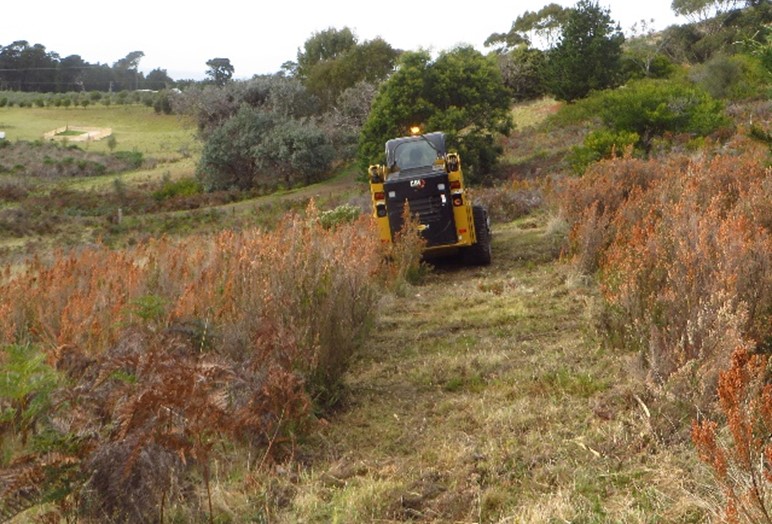
Spanish Heath control experiment
The following control method trials have taken place on a property in South Arm, Tasmania over eight weeks from 31/07 to 25/09/2023.
Aim
The aim of the trials is to ascertain the most effective methods to control a dense, established infestation of Spanish heath within a cleared section of bushland. The size of the Spanish heath infestation was approximately 1200m2 at the time of starting the trials.
Constraints
- Timing – given the time of year, much of the Spanish heath was already in flower at the time of commencing the control methods.
- Access – the area is accessible to small machinery, though access is restricted during inclement weather.
Methodology
Five 16m2 quadrats were established throughout the area (see figure 3), each with specific control methods to be implemented, as follows:
- Quadrat A (control quadrat) – Cut Spanish heath down to stump level and leave to monitor for regrowth.
- Quadrat B (foliar spray) – Spray plants thoroughly using Apparent Woody® herbicide at a rate of 1:150 (see figure 4).
- Quadrat C (Cut-paste) – Cut plants down to stump level using brush cutter in 1m2 patches at a time. Apply an herbicide mix of Weed Master Duo® at a rate of 1:3 immediately after cutting (see figure 5).
- Quadrat D (hand removal) – A section of smaller plants was used for this method. Hand-pull all plants within quadrat and monitor area.
- Quadrat E (Foliar spray of stump regrowth) – Allow plants two weeks to regrow after cutting, then spray any regrowth with Apparent Woody® at a rate of 1:150 (see figure 6).
Quadrats were monitored on a weekly basis to assess the progress of each control method.
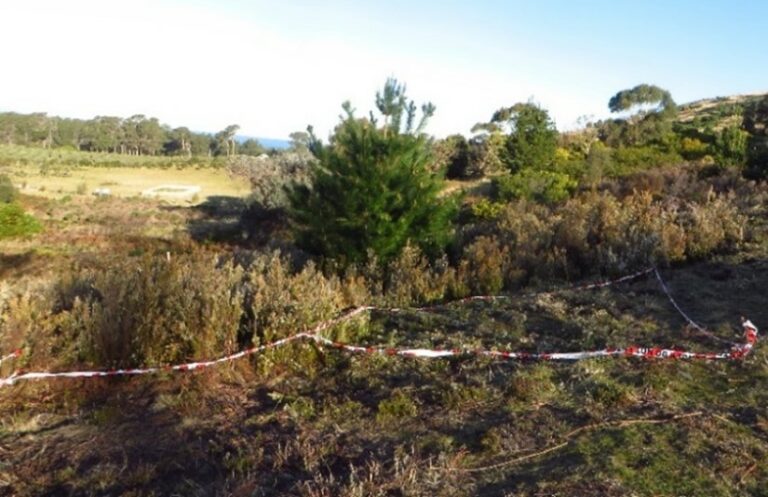
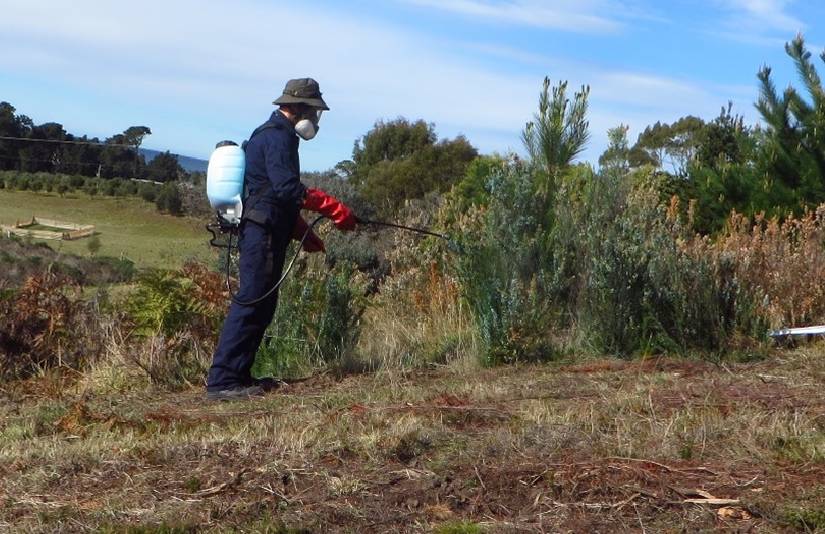
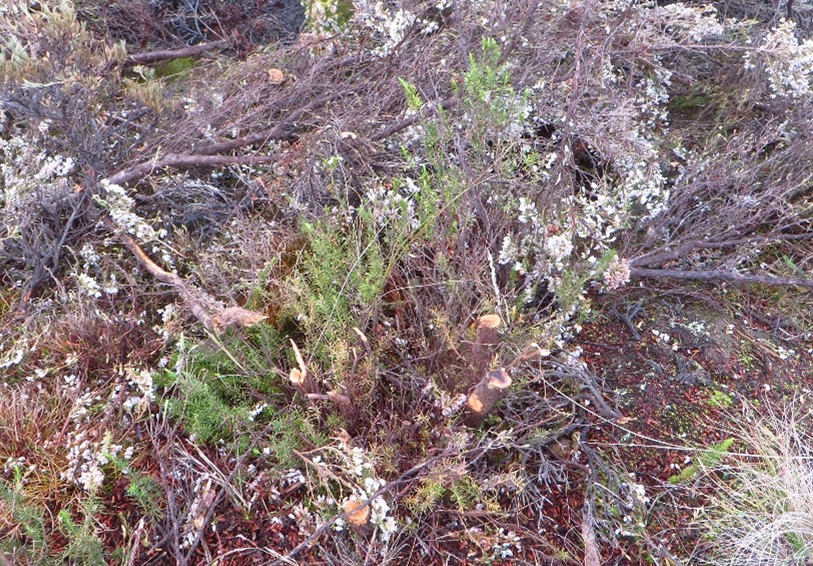
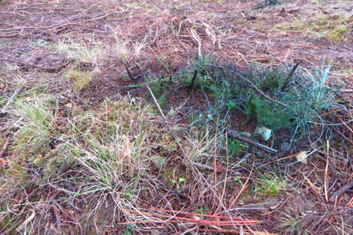
Results and Findings
After eight weeks and regular monitoring, the following results were observed:
- Quadrat A (control) – significant regrowth from stump level. Regrowth appeared healthy and had a fast growth rate.
- Quadrat B (foliar spray) – all plants sprayed showed increasing signs of dieback with each week monitored and, by the end of the experiment, showed no signs of living tissue and zero regrowth (figure 4). All plants sprayed were over one metre tall, so mechanical removal of dead Spanish heath would be required in order to repurpose the land. Native plants were also affected by off-target damage.
- Quadrat C (cut-paste) – 80% of the treated stumps showed minimal signs of regrowth and increased browning of remaining foliage. 20% of stumps showed some browning but also healthy regrowth and a few stumps showed strong signs of regrowth. It was likely that native plants were treated with herbicide as stumps were indistinguishable from Spanish heath. This method was time-consuming, and it was possible that several stumps were missed after cutting due to the presence of plant debris.
- Quadrat D (hand removal) – Some smaller seedlings were missed in the initial hand removal and had grown significantly over the eight-week period. Native heath within the area had also grown significantly. This method was the most time-consuming and was limited to smaller plants but protected any native species.
- Quadrat E (Foliar spray of stump regrowth) – All plants treated showed strong signs of dieback and minimal regrowth. This method also allowed for native species to regrow, making it easier to distinguish them when spraying. The use of dye assisted in keeping track of which plants had been sprayed. A great method for long-term control.
Throughout all quadrats, evidence of new Spanish heath germination was visible with seedlings scattered throughout each area. This is due to the seedbank already present in the soil.
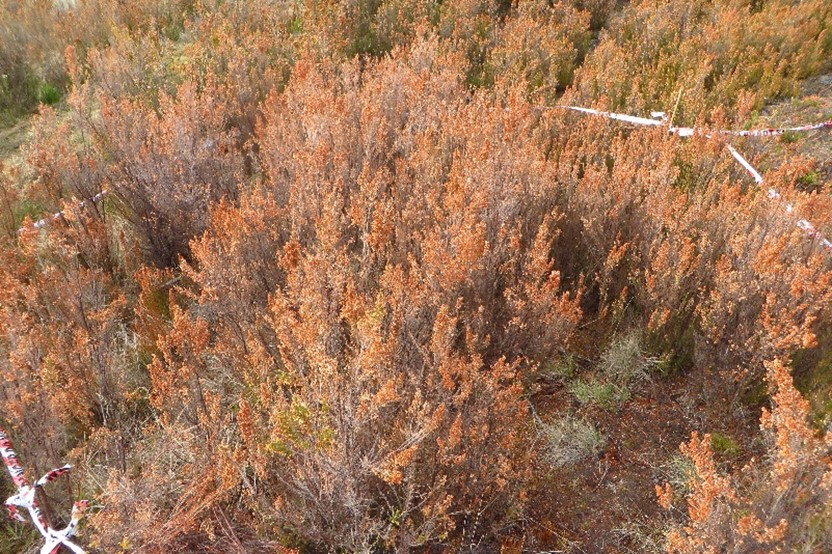
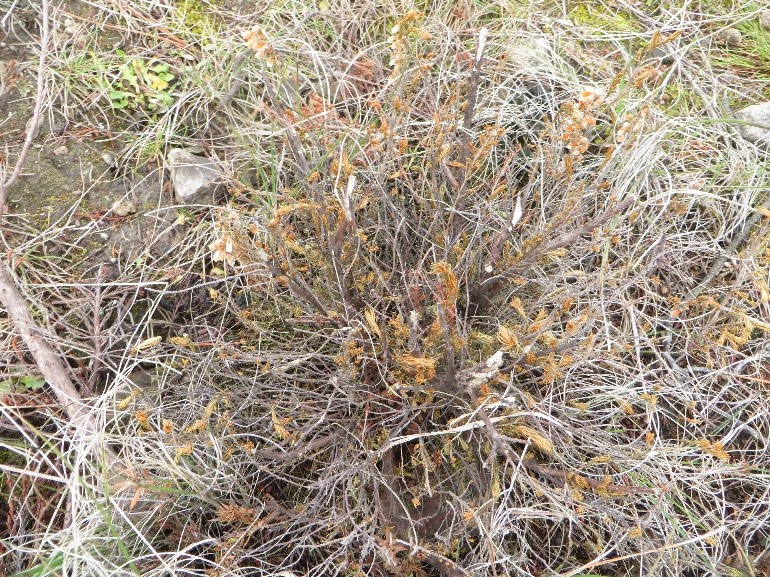
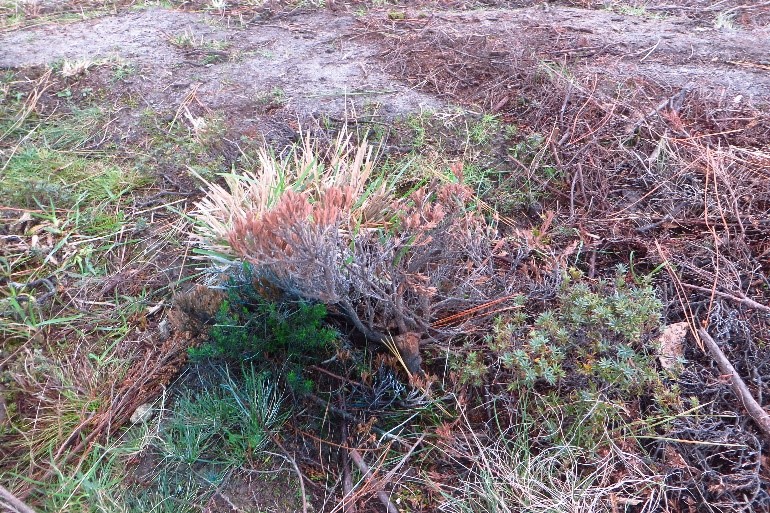
Conclusions
The trials and results served to highlight the advantages and disadvantages of each control method as well as validate the assumptions made prior to commencing the experiment.
Simply brush cutting Spanish heath does prevent Spanish heath from seeding but also means regular follow up work to keep regrowth down. Foliar spray is effective at killing the plant but does cause off-target damage and leaves the dead plants in situ. Hand removal is effective, but not feasible for dense infestations. Cut-paste is effective though timely, and foliar spray of regrowth after two weeks is effective for distinguishing the plant from native species. A comprehensive weed management plan will incorporate a multitude of methods for implementation where applicable.
How can we help?
Control of Spanish heath is a long-term undertaking and can be costly if not performed correctly. For a holistic approach to weed control, contact us for a free assessment of your property and quote. Read more about our land management service here, or contact us for any questions you may have.

Blog written by Kyle McCallum
Kyle McCallum is dedicated to the field of conservation. His zeal and respect for the natural world means he understands the intrinsic value of plants and every tree, shrub or grass planted is a victory in his eyes.
With a sound knowledge of land care principals and excellent plant identification skills, as well as hands-on experience in the industry, he takes pride in working collaboratively with stakeholders to restore biodiversity and help create habitat for native wildlife.
Kyle is responsible for overseeing land management and revegetation projects including weed control, plant selection and site regeneration. Click here to learn more about our team.
